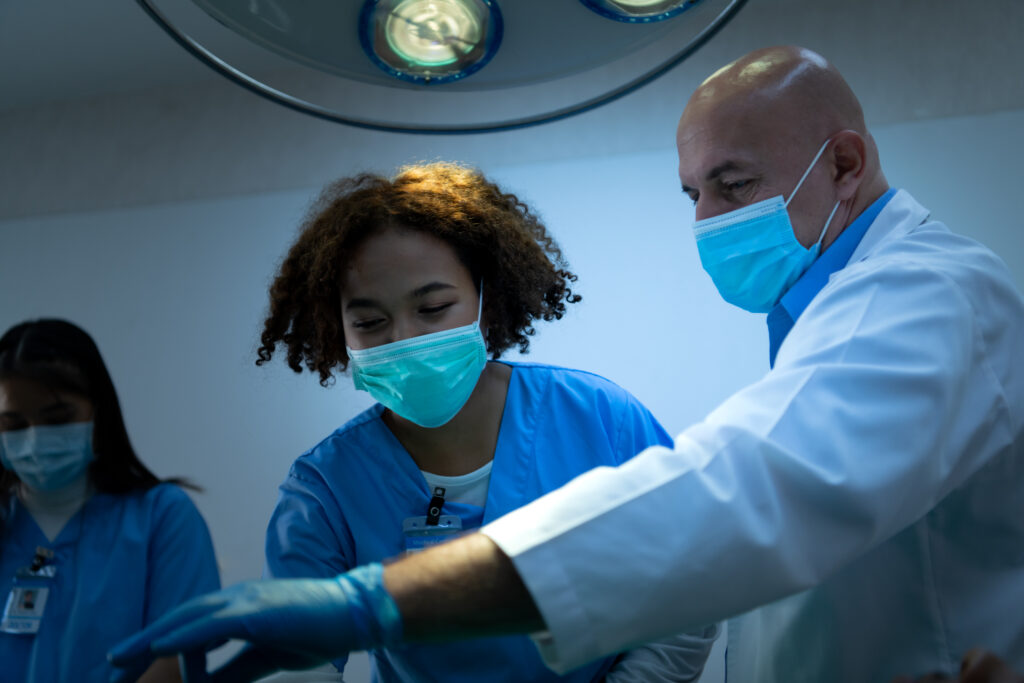
The Demise of the Inpatient Only List – CMS Tries Again
The Centers for Medicare & Medicaid Services (CMS) is once again proposing to eliminate the inpatient only list starting in January 2026, repeating the process

One way to assess an area or organ for the presence of, or status of, a disease is the ‘old-fashioned’ way – via palpitation to see how it feels, i.e., how stiff or elastic the area is. To go beyond the boundaries of physical touch in a noninvasive manner, ultrasound elastography has been gaining clinical popularity.
Ultrasound elastography can be used to noninvasively determine the degree of fibrosis in a specific area or organ by applying stress and detecting the amount of tissue displacement using ultrasound imaging. Most commonly, this has been used to assess characteristics of lesions in the breast, thyroid and liver. Effective January 1st, 2019 three CPT® codes were introduced for reporting ultrasound elastography:
76981 Ultrasound, elastography; parenchyma (e.g., organ)
76982 Ultrasound, elastography; first target lesion
+76983 Ultrasound, elastography; each additional target lesion (List separately in addition to code for primary procedure)
When comes to reporting these codes, there are some important points to be aware of:
Finally, and possibly most importantly, is the need to check with payers for their coverage policies prior to submitting these codes. Currently, there are payers that consider ultrasound elastography to be a non-covered service. Stay tuned and be aware of updates to those policies as use of ultrasound elastography continues to expand.
With rapid advancements in technology, it can be difficult to be able to keep up with current trends, new services and techniques plus the codes and guidelines that go along with them. We can help you with that, the Ultrasound Coder is designed to be a quick, easy-to-use reference organized by body system to quickly answer questions and determine accurate codes for both diagnostic and interventional procedures.


The Centers for Medicare & Medicaid Services (CMS) is once again proposing to eliminate the inpatient only list starting in January 2026, repeating the process

Today, in utilization news, there is a warning to any surgeons who may be reading this – or anyone who works with surgeons. You may
Please log in to your account to comment on this article.

Sepsis remains one of the most frequently denied and contested diagnoses, creating costly revenue loss and compliance risks. In this webcast, Angela Comfort, DBA, MBA, RHIA, CDIP, CCS, CCS-P, provides practical, real-world strategies to align documentation with coding guidelines, reconcile Sepsis-2 and Sepsis-3 definitions, and apply compliant queries. You’ll learn how to identify and address documentation gaps, strengthen provider engagement, and defend diagnoses against payer scrutiny—equipping you to protect reimbursement, improve SOI/ROM capture, and reduce audit vulnerability in this high-risk area.

Only ICD10monitor delivers what you need: updates on must-know changes associated with the FY26 IPPS, including new ICD-10-CM/PCS codes, CCs/MCCs, and MS-DRGs, plus insights, analysis and answers to your questions from two of the country’s most respected subject matter experts.

This third session in our 2026 IPPS Masterclass will feature a review of FY26 changes to the MS-DRG methodology and new technology add-on payments (NTAPs), presented by nationally recognized ICD-10 coding expert Christine Geiger, MA, RHIA, CCS, CRC, with bonus insights and analysis from Dr. James Kennedy.

This second session in our 2026 IPPS Masterclass will feature a review the FY26 changes to ICD-10-PCS codes. This information will be presented by nationally recognized ICD-10 coding expert Christine Geiger, MA, RHIA, CCS, CRC, with bonus insights and analysis from Dr. James Kennedy.

During this essential RACmonitor webcast Michael Calahan, PA, MBA Certified Compliance Officer, will clarify the rules, dispel common misconceptions, and equip you with practical strategies to code, document, and bill high-risk split/shared, incident-to & critical care E/M services with confidence. Don’t let audit risks or revenue losses catch your organization off guard — learn exactly what federal auditors are looking for and how to ensure your documentation and reporting stand up to scrutiny.

Learn how to navigate the proposed elimination of the Inpatient-Only list. Gain strategies to assess admission status, avoid denials, protect compliance, and address impacts across Medicare and non-Medicare payors. Essential insights for hospitals.

RACmonitor is proud to welcome back Dr. Ronald Hirsch, one of his most requested webcasts. In this highly anticipated session, Dr. Hirsch will break down the complex Two Midnight Rule Medicare regulations, translating them into clear, actionable guidance. He’ll walk you through the basics of the rule, offer expert interpretation, and apply the rule to real-world clinical scenarios—so you leave with greater clarity, confidence, and the tools to ensure compliance.

Bring your questions and join the conversation during this open forum series, live every Wednesday at 10 a.m. EST from June 11–July 30. Hosted by Chuck Buck, these fast-paced 30-minute sessions connect you directly with top healthcare experts tackling today’s most urgent compliance and policy issues.
CYBER WEEK IS HERE! Don’t miss your chance to get 20% off now until Dec. 2 with code CYBER24